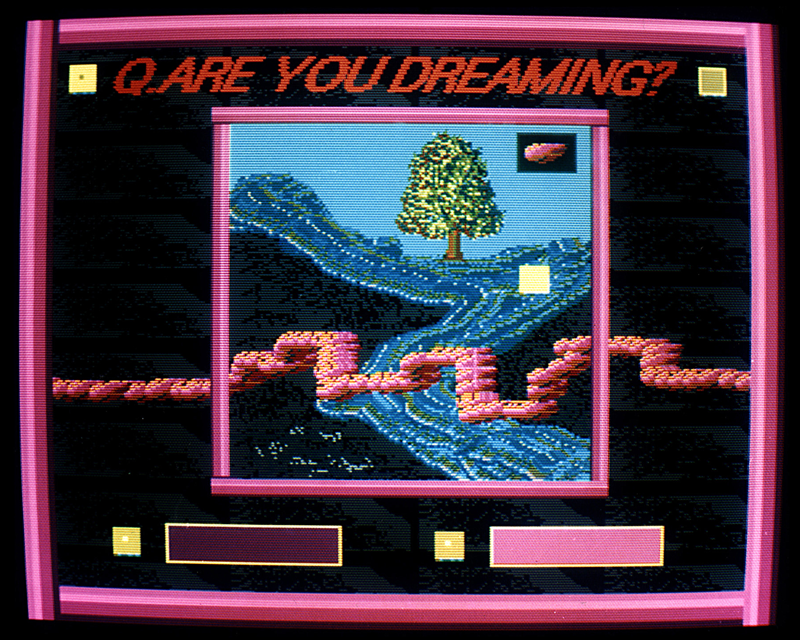Are You Dreaming?
This question, inherent in the title of a work by Suzanne Treister, pervades the rooms of Electric Dreams, on display at the Tate Modern in London until June 1, 2025. Digital paintings, kinetic works, obsolete media, and bold experiments carried out over decades of exploration—from the 1950s to the 1990s—follow one another like fragments of a dream in the exhibition curated by Val Ravaglia and Odessa Warren.
Electric Dreams borrows its title from the visionary and prophetic stories of science fiction master Philip K. Dick to explore intriguing attempts at dialogue between art and technology before the advent of the Internet. The exhibition brings together a selection of artists who experimented with emerging media and the possibilities offered by electronics, cybernetics, and programmed art: from Atsuko Tanaka’s Electric Dress (1956) and Brion Gysin’s Dreamachine (1959), to Harold Cohen’s Drawing (1979) created in collaboration with AARON, the first artificial intelligence program for creating works of art, up to the 1990s with the aforementioned selection of Fictional Videogame Stills by British artist Suzanne Treister.
Art and technology have always intertwined their destinies, redefining the perception of reality and the very role of art. This reflection finds an interesting parallel in SENSORAMA. The Gaze, Reality, and Deceptions(July 8, 2022 – October 9, 2022), an exhibition at the MAN curated by Chiara Gatti and Tiziana Cipelletti, with scientific advice from the Department of Biomedical Sciences of the University of Sassari.
SENSORAMA explored the boundary between perception and reality, analyzing the visual deceptions that affect our way of seeing the world. As in Electric Dreams, technology is not just a tool, but a cognitive environment that shapes our experience of the world.
A significant point of contact between the two exhibitions is the presence of two key figures of the optical-kinetic movement: Alberto Biasi and Marina Apollonio. Their works exhibited at the Tate—Se-dici…ottico-dinamiche (1964–1998) and Spazio ad Attivazione Cinetica 6B (1967–2022), respectively—show how art can manipulate visual perception through phenomena of optical interference and dynamic illusions.
Biasi, co-founder of the Gruppo N, had been developing research on the interaction between the viewer and the artwork since the 1960s, creating vibrating surfaces that change based on the viewpoint. Apollonio, one of the protagonists of optical-kinetic art, investigated the relationships between form and movement through geometric modules that challenge the stability of vision.
The comparison between Electric Dreams and SENSORAMA highlights how contemporary art continues to question the relationship between humans and technology, not only as a means of innovation but as a cultural paradigm. In an era dominated by virtual reality and artificial intelligence, these exhibitions invite us to reconsider our gaze on the world, between illusion and truth, perception and the construction of reality. Once again, art proves to be an essential tool for deciphering the complexities of our time.
Elisabetta Masala

